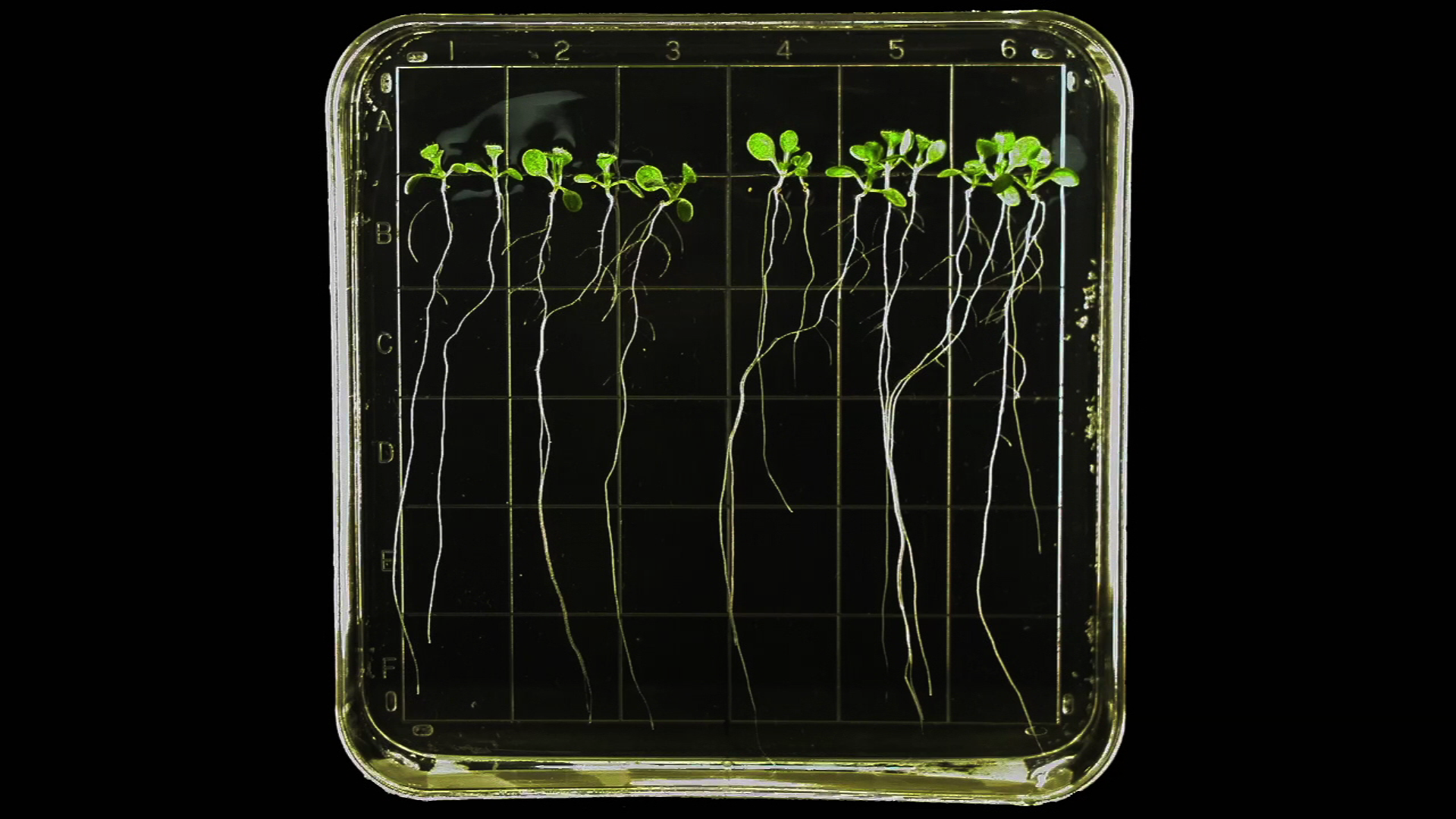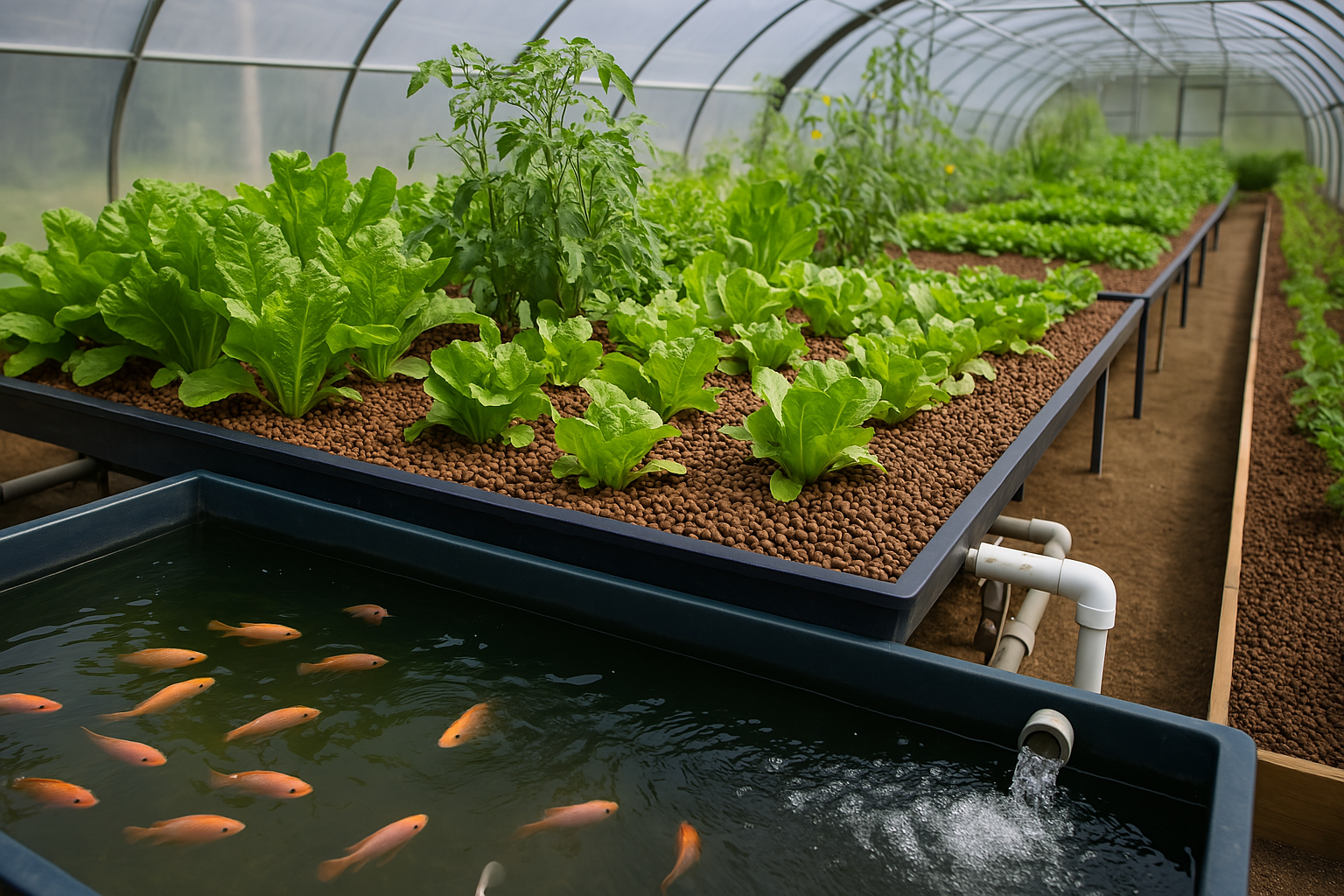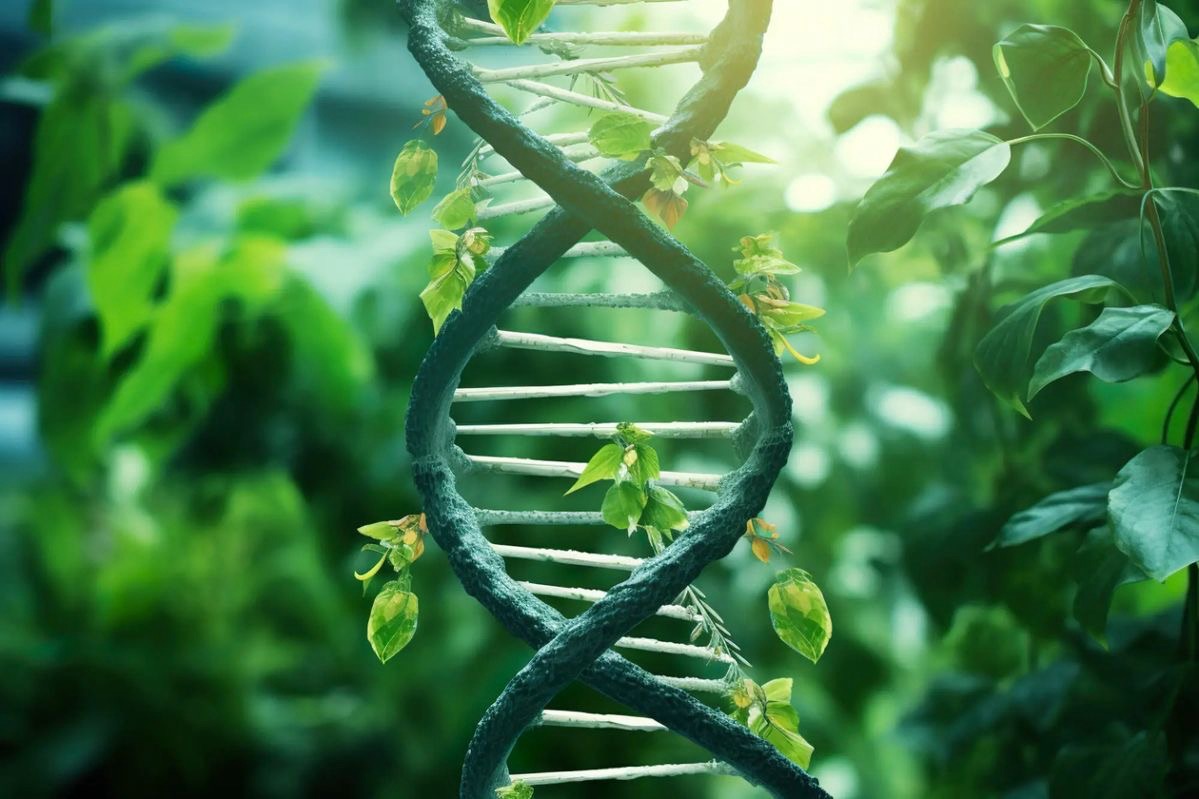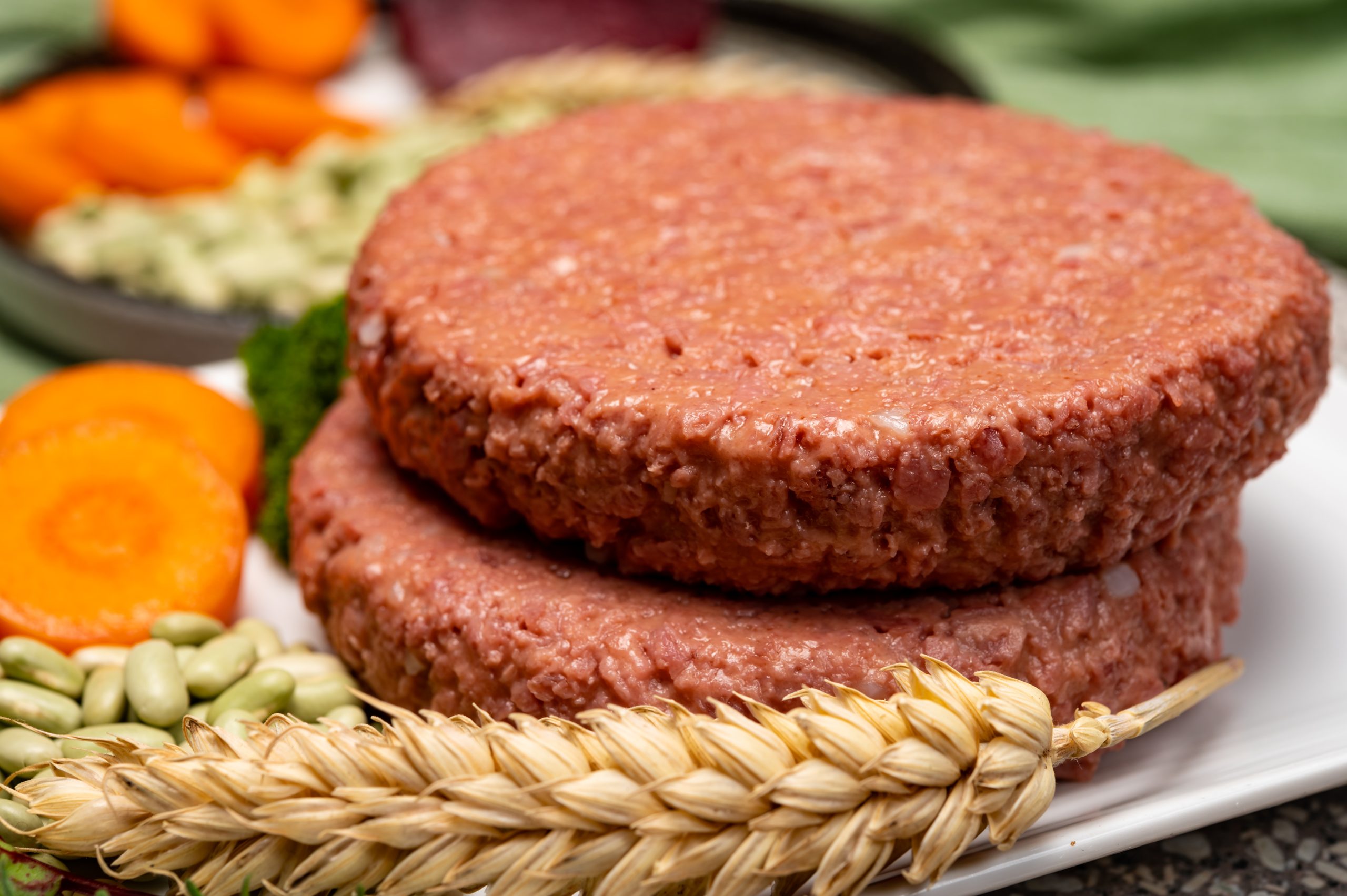The exploration of plant growth in microgravity has become crucial for long-term human space exploration, as plants could provide food, oxygen, and psychological benefits on extended missions. On Earth, gravity fundamentally shapes plant physiology by guiding root growth, shoot orientation, and nutrient and water transport. Gravity directs roots to grow downward and shoots to grow upward in a process known as gravitropism, supporting efficient nutrient and water uptake through gravity-driven capillary forces. In space, however, microgravity—characterized by minimal gravitational pull—disrupts these processes, forcing plants to adapt in unusual ways.
In microgravity, the loss of gravitational cues results in disoriented root and shoot growth, creating a chaotic structure that diverges from the organized patterns observed on Earth. Roots and shoots in microgravity lose their directional growth, becoming amorphous and erratic as they rely on alternative cues, such as light (phototropism) and touch (thigmotropism), to navigate their environment (Herranz et al., 2013). Additionally, microgravity alters plant cell organization at a microscopic level. In particular, changes in the cytoskeleton, which acts as a support structure within cells, affect cellular processes like division and expansion. These alterations, in turn, impact the overall plant structure, challenging scientists to find ways to sustain organized plant growth in space (Kiss et al., 2012). Another critical area of impact is water and nutrient transport within the plant. In terrestrial plants, gravity aids the transpiration-driven movement of water and nutrients from roots to leaves. In space, without gravity to assist this movement, water distribution becomes irregular, leading to uneven hydration and potential nutrient deficiencies. Microgravity affects gas exchange as well, as reduced transpiration impairs the plant’s ability to regulate temperature and perform photosynthesis effectively (Wolverton & Kiss, 2009). Moreover, photosynthesis itself, although biochemically stable, undergoes structural challenges in space. Chloroplast distribution within plant cells, crucial for light absorption, is disrupted, which may lead to changes in photosynthetic efficiency. Microgravity influences chlorophyll content, leaf anatomy, and light sensitivity, all of which are essential factors in the photosynthetic process (Tripathy et al., 1996).
Studying how plants grow in microgravity offers insights into essential survival strategies in space. These insights are not just theoretical; they are foundational for developing agricultural systems capable of supporting astronauts on long missions. From specialized nutrient delivery systems to optimized lighting solutions, scientists are crafting new approaches to cultivate crops in space, fostering sustainable agriculture that could one day enable human life to flourish on other planets (Massa et al., 2010).
How Microgravity Affects Plant Orientation and Growth Patterns
In a microgravity environment, plants experience a fundamental shift in how they orient their growth due to the lack of gravitational cues, which disrupts gravitropism. Gravitropism, or the ability of plants to sense and respond to gravity, typically guides roots to grow downward (positive gravitropism) to access soil nutrients and water, while shoots grow upward (negative gravitropism) toward light sources for photosynthesis. This organized, directional growth is essential for the plant’s structure and nutrient acquisition on Earth, where gravitational force provides a constant directional cue (Blancaflor & Masson, 2003; Kiss, 2000). In microgravity, however, this sense of direction is absent, leading to what is often referred to as an “amorphous” or random growth pattern in which roots and shoots lack a consistent directional preference, making them grow in unexpected, disoriented ways (Herranz et al., 2013; Kiss et al., 2012).
In the absence of gravity, other environmental cues take on greater significance in guiding plant growth. Phototropism, or growth in response to light, becomes more dominant as plants adapt to orient themselves towards available light sources in space. Studies have shown that under these conditions, plants adjust their growth according to light direction, which partially compensates for the lack of gravitational cues (Millar, 2015). Another influential factor in microgravity is thigmotropism, the response to physical touch or surface contact. When plants cannot rely on gravity, they may use surface contact with growth chambers or surrounding objects to anchor themselves, shaping their growth patterns around these physical interactions.
Interestingly, the impact of microgravity on plant growth orientation also triggers changes at a cellular level. Cells in the root cap, called statocytes, typically contain dense, starch-filled organelles called amyloplasts, which sink to the bottom of the cell in response to gravity on Earth. This sedimentation activates gravity-sensing pathways, helping roots to grow downward. In microgravity, however, amyloplast sedimentation is disrupted, and statocytes cannot detect gravitational direction, which further impairs root orientation and initiates a cascade of molecular changes that alter growth responses (Kiss et al., 2012; Paul et al., 2013).
Experiments on the International Space Station (ISS) and other space missions have demonstrated that without gravity, plants will grow with unusual root and shoot configurations, even forming looped or spiral patterns in search of direction. These growth deviations pose unique challenges to cultivating structured plants in space environments, which has led scientists to study how plants respond to artificial gravity in rotating space habitats or centrifuges (Stutte et al., 2006). This research on plant orientation and growth patterns in microgravity is key to developing sustainable food systems in space, as it informs strategies for training plants to grow in unconventional orientations while maintaining efficient resource use.
Cellular and Molecular Changes in Microgravity
Microgravity exerts significant influence on plant cellular processes and molecular pathways, altering essential structural and regulatory mechanisms. At the cellular level, one of the primary areas affected is the cytoskeleton, which consists of protein filaments, like microtubules and actin filaments, responsible for maintaining cellular integrity, facilitating transport, and directing cellular responses to stimuli. In a microgravity environment, the cytoskeleton loses its typical orientation, impacting its ability to support cell division and elongation—processes essential for organized growth and development. Studies, including those conducted on the International Space Station, have shown that plants grown in microgravity experience abnormal organization of microtubules and actin filaments, leading to atypical cell shapes and impaired growth patterns (Kiss et al., 2012; Soga et al., 2002).
Microgravity also prompts changes in gene expression, which influence key metabolic processes and stress responses. Genes involved in calcium signaling, for instance, exhibit altered expression patterns in space. Calcium is crucial for a variety of cellular functions, including cell wall stability and response to environmental stimuli. Without gravity, calcium distribution within cells becomes irregular, disrupting calcium signaling pathways that normally help plants detect and respond to environmental cues. This disruption affects downstream processes such as growth, cellular signaling, and stress response mechanisms (Paul et al., 2013; Millar, 2015).
Studies also reveal that genes involved in photosynthesis and cell wall metabolism show abnormal expression in space environments, leading to changes in chlorophyll content and modifications in cell wall structure. This affects photosynthetic efficiency, water retention, and cellular rigidity—factors that are vital for sustaining plant structure and function on Earth. The altered expression of photosynthesis-related genes often results in reduced chloroplast organization, affecting plants’ light absorption capacity and, consequently, their energy production (Tripathy et al., 1996). Alterations in cell wall composition further contribute to the irregular growth patterns observed in microgravity, as the cell wall’s role in maintaining plant rigidity and facilitating intercellular communication is compromised. These cellular and molecular changes in response to microgravity are integral to understanding how plants might adapt to space conditions. They also hold practical implications for space agriculture, as they highlight potential genetic and physiological targets for breeding plants that are better suited to low-gravity environments. Through genetic engineering or selection of space-adapted traits, it may be possible to enhance plant resilience in space, providing stable sources of food and oxygen on long-term missions (Stutte et al., 2006; Kiss, 2000).
Impact on Nutrient and Water Transport
Microgravity poses substantial challenges to nutrient and water transport in plants, largely due to the absence of gravity-driven forces that assist these processes on Earth. Under terrestrial conditions, water moves from roots to leaves through a process involving capillary action and transpiration, where water evaporation from the leaves creates negative pressure to pull water upward. Gravity aids this mechanism, allowing for a steady flow that supports nutrient transport, gas exchange, and temperature regulation. In microgravity, however, the absence of gravitational force disrupts this system, making capillary action the primary means of water and nutrient movement. This change leads to irregular distribution, as capillary forces alone are insufficient to drive consistent water transport across large plant structures, which can result in uneven hydration and nutrient availability (Kordyum, 2003; Wolverton & Kiss, 2009).
Also, the lack of gravity disrupts the typical pattern of root pressure, which normally helps push water up through the xylem when transpiration is low. Without gravity, root pressure can decrease significantly, affecting the plant’s ability to maintain steady water movement and nutrient uptake. The impact of this irregular water distribution is further compounded by changes in gas exchange, as reduced water flow through the plant diminishes transpiration rates. Transpiration is critical not only for cooling the plant but also for enabling the uptake and transport of minerals, which affects overall growth and metabolic processes essential for photosynthesis (Monje et al., 2003). These changes impact plant physiology at multiple levels, influencing both cellular function and metabolic regulation. Studies conducted on the International Space Station show that plants in microgravity tend to adjust by altering their cellular transport mechanisms and modifying their membrane transport proteins to partially compensate for these challenges. However, these adaptations are often not enough to fully replicate terrestrial efficiency, resulting in stunted growth, abnormal root and shoot morphology, and sometimes nutrient deficiencies (Paul et al., 2013; Wheeler, 2010). The implications of disrupted nutrient and water transport are significant for space agriculture. Scientists are exploring methods to improve nutrient distribution in microgravity, such as using specially designed growth chambers that incorporate artificial gravity or adjust the atmospheric pressure and humidity to enhance water movement. These studies not only enhance our understanding of plant responses to extreme environments but also provide insights into how we might grow food crops effectively on future long-duration space missions.
Photosynthesis and Light Response in Microgravity
Photosynthesis in microgravity is a complex area of study, as gravity influences key factors involved in light capture and conversion processes. On Earth, gravity affects leaf orientation, which in turn affects how much light the plant can absorb effectively. Gravity also plays a role in how chloroplasts, the cell structures responsible for photosynthesis, are distributed within cells. In microgravity, the typical sedimentation of chloroplasts to certain areas within the cell is disrupted, potentially leading to uneven light absorption and altered photosynthetic efficiency. Studies indicate that while the biochemical core of photosynthesis—particularly carbon fixation and electron transport chains—remains largely stable in microgravity, the physical and structural aspects of photosynthesis are affected (Tripathy et al., 1996; Kiss et al., 2012).
In microgravity, plants experience alterations in their chloroplast positioning, which can impact how chlorophyll pigments capture light. For instance, chloroplasts in microgravity do not undergo the same phototactic movements observed on Earth, where chloroplasts move to optimize light capture in low light or avoid photodamage in high light. This altered distribution can cause fluctuations in chlorophyll content and reduce the plant’s overall photosynthetic efficiency. Additionally, structural changes in leaves, such as the thickness of cell layers and modifications in leaf surface morphology, have been observed, which may also impact the light absorption and gas exchange essential for photosynthesis (Stutte et al., 2006; Paul et al., 2013).
Another factor influenced by microgravity is light perception. In a gravity-free environment, plants rely more heavily on other cues, such as light direction and wavelength, to orient themselves. This shift can affect the activity of photoreceptors, the light-sensing proteins that regulate plant responses to blue, red, and far-red light. Without a consistent gravitational cue, photoreceptor activity in microgravity may lead to atypical patterns in plant growth and development, affecting processes like phototropism (the growth response to light) and circadian rhythms, which are key to plant growth cycles and efficient photosynthesis (Kiss et al., 2019). The cumulative effect of these structural and perceptual changes on photosynthesis has implications for space-based agriculture, as plants may require different light conditions or genetic adaptations to maintain optimal photosynthesis in microgravity. Researchers are experimenting with adaptive lighting strategies and selective breeding of plants to enhance their ability to perform photosynthesis efficiently in space. As space missions increase in duration, ensuring that plants can photosynthesize effectively under microgravity conditions will be essential for providing astronauts with reliable sources of oxygen and food.
Stress Response and Hormonal Regulation
Plants in microgravity experience significant stress, primarily due to the absence of gravitational cues, which disrupts the usual distribution of growth-regulating hormones. This environment triggers a complex hormonal response that impacts their growth, development, and ability to adapt to space conditions. One of the primary hormones affected by microgravity is auxin, a key regulator of plant growth and directional movement. Auxin typically distributes unevenly within plant tissues in response to gravity, enabling roots to grow downward and shoots upward. However, in microgravity, this distribution mechanism is disrupted, resulting in abnormal growth patterns since auxin cannot accumulate in the typical concentration gradients required for directional growth (Kiss, 2015; Wolverton & Kiss, 2009).
Additionally, the levels of ethylene—a hormone involved in stress response and developmental processes such as fruit ripening and leaf senescence—are often elevated in space. Ethylene accumulation can be problematic in enclosed environments like space habitats, where it can disrupt normal growth, delay seedling development, and reduce overall plant health. To mitigate these effects, researchers have explored ethylene-removal techniques in space-based plant growth chambers to ensure optimal growth conditions (Massa et al., 2010; Stutte, 2006).
Abscisic acid (ABA), another critical hormone, plays a significant role in plants’ water stress response. In microgravity, ABA levels are observed to fluctuate, impacting the plant’s ability to regulate stomatal opening and closing—a mechanism vital for water retention and gas exchange. Disruptions in ABA levels may reduce plants’ tolerance to water stress in space, as this hormone is essential for closing stomata under water-limited conditions. An imbalance in ABA can affect plant hydration, photosynthesis, and stress resilience, as well as influence the timing of flowering and seed production (Ferl et al., 2002). Microgravity also affects other hormones like gibberellins and cytokinins, which influence cell division and elongation, leading to irregularities in plant structure and growth. These hormonal imbalances underscore the need for advanced space-based growth systems that can help modulate hormone levels, potentially through selective breeding or genetic engineering, to optimize plant resilience in space conditions. By studying these hormonal adaptations, scientists hope to develop more effective strategies for growing healthy, productive plants during long-duration space missions.
Implications for Space Agriculture
The study of plant responses to microgravity holds immense promise for advancing sustainable agriculture in space, a necessity as humanity sets its sights on extended missions to the Moon, Mars, and beyond. Microgravity creates unique challenges for plant growth, but also offers insights into how plants can be adapted to non-terrestrial environments, potentially transforming how we approach food production in space. Understanding the physiological and cellular impacts of microgravity enables scientists to design growth systems that compensate for the lack of gravitational cues. This includes developing advanced growth chambers that mimic aspects of Earth’s environment, such as tailored lighting systems that simulate solar light, and nutrient-delivery methods that address water distribution issues caused by the absence of gravity. LED lighting, for example, can be customized to deliver specific wavelengths that promote photosynthesis, making it an effective substitute for natural sunlight in space-based agriculture (Wheeler, 2010).
Additionally, research on plant hormone regulation in microgravity has revealed the need for mechanisms to balance hormones like auxin, ethylene, and abscisic acid, which are essential for plant development and stress resistance. This knowledge supports the design of more resilient plant varieties through selective breeding or genetic modification, which could help plants better withstand the stress of space conditions. Enhanced resistance to ethylene accumulation, for instance, could prevent the growth abnormalities that plants often exhibit in space habitats.
Nutrient management in space is another critical area. On Earth, gravity aids in the efficient movement of nutrients through the plant, but in microgravity, nutrient delivery must rely solely on capillary action, which can be inefficient. Scientists are developing hydroponic and aeroponic systems that deliver nutrients directly to plant roots in controlled-environment chambers, ensuring stable nutrient supply and promoting robust growth. This research not only addresses immediate space challenges but also informs hydroponic and closed-system agriculture on Earth, where water and nutrient efficiency are equally crucial (Massa et al., 2010). Moreover, long-term space missions and the prospect of growing plants on Mars require sustainable, closed-loop agricultural systems. Plants offer a valuable resource for recycling carbon dioxide, generating oxygen, and even purifying water, making them essential for life support systems. Successful space agriculture could ultimately reduce the need for supply missions, making deep-space exploration more feasible. These developments not only pave the way for extraterrestrial agriculture but also advance sustainable agriculture technologies that could have significant benefits on Earth, particularly in resource-limited environments.
Conclusion
The study of microgravity’s impact on plant growth offers invaluable insights for advancing both space agriculture and our understanding of fundamental plant biology. As humanity considers the realities of long-term space missions and extraterrestrial colonization, the ability to cultivate crops in space becomes crucial for sustainable life support. Plants in microgravity face a unique set of challenges: disrupted gravitropism, altered cellular structures, changes in water and nutrient transport, and imbalances in hormonal regulation. Addressing these challenges has led to innovations such as specialized growth chambers, adaptive lighting, and nutrient delivery systems, all designed to optimize plant growth in space conditions. Research has shown that while the biochemical processes of plants remain largely intact in microgravity, their physical structures, orientation mechanisms, and stress responses are profoundly affected. For example, by exploring how microgravity alters root orientation, photosynthetic efficiency, and water transport, scientists are creating more effective methods for managing plant growth in closed environments. Furthermore, understanding and adjusting hormone levels, such as auxin and ethylene, can help mitigate the developmental abnormalities that plants experience in space. These adaptations and technological advancements are foundational for future extraterrestrial agriculture, particularly in potential habitats on Mars or lunar bases, where Earth-like conditions are absent. The implications of space agriculture research extend beyond space, offering innovations that can improve agricultural sustainability on Earth. Techniques developed to optimize growth in resource-limited environments like space could help address agricultural challenges related to climate change, water scarcity, and soil degradation. From hydroponic systems to advanced LED lighting, these technologies support food production in urban settings and arid regions, paving the way for more resilient and efficient farming practices worldwide. Ultimately, the continued study of plants in space highlights the adaptability of life and the critical role of technology in overcoming environmental constraints. As space missions extend further into our solar system, the advancements in space agriculture will not only be essential for human survival beyond Earth but will also redefine how we approach sustainable agriculture on our planet.
References
- Blancaflor, E. B., & Masson, P. H. (2003). “Plant Gravitropism: Unraveling the Ups and Downs of a Complex Process.” Plant Physiology, 133(4), 1677–1690.
- Ferl, R. J., et al. (2002). “Plants in space.” Current Opinion in Plant Biology, 5(3), 258-263.
- Herranz, R., et al. (2013). “Ground-based facilities for simulation of microgravity: organism-specific recommendations for their use, and recommended terminology.” Astrobiology, 13(1), 1-17.
- Kiss, J. Z. (2000). “Mechanisms of the early phases of plant gravitropism.” Critical Reviews in Plant Sciences, 19(5), 551–573.
- Kiss, J. Z. (2015). “Plant tropisms: And emerging model for space research.” Journal of Plant Research, 128(2), 169-179.
- Kiss, J. Z., et al. (2012). “Spaceflight alters the cytoskeleton and gene expression in Arabidopsis.” Plant Biology, 59(1), 51-58.
- Kiss, J. Z., et al. (2019). “Phototropism in plants: Mechanisms and implications for crop improvement.” Annual Review of Plant Biology, 70, 665-687.
- Kordyum, E. L. (2003). “Plant Cell Gravisensitivity and Adaptation to Microgravity.” Advances in Space Research, 31(10), 2237-2243.
- Massa, G. D., et al. (2010). “Growth chambers on the ISS: Preparing for long-duration plant experiments.” Plant Science, 10(5), 565-572.
- Massa, G. D., et al. (2010). “Plant Growth and Gene Expression on the International Space Station.” Plant Biology, 58(1), 1-10.
- Millar, A. J. (2015). “Spaceflight and Plant Biology.” Annual Review of Plant Biology, 66, 23-32.
- Monje, O., et al. (2003). “Microgravity does not alter plant stand gas exchange of wheat at moderate light levels and saturating CO2.” Advances in Space Research, 31(1), 221-227.
- Paul, A.-L., et al. (2013). “Plant molecular responses to spaceflight environments.” Plant Biology, 15(2), 1-12.
- Soga, K., et al. (2002). “Effects of hypergravity on microtubule orientation in primary roots of maize.” Plant Physiology, 130(3), 1190–1197.
- Stutte, G. W. (2006). “Microgravity effects on the physiology of higher plants.” Advances in Space Research, 37(6), 1071-1078.
- Tripathy, B. C., et al. (1996). “Photosynthetic apparatus of higher plants and algae in space.” Advances in Space Research, 18(4), 243-250.
- Wheeler, R. M. (2010). “Plants for human life support in space: From Myers to Mars.” Gravitational and Space Biology, 23(2), 25-35.
- Wolverton, C., & Kiss, J. Z. (2009). “An Update on Plant Space Biology.” Gravitational and Space Biology Bulletin, 22(2), 13–24.
- Wolverton, C., & Kiss, J. Z. (2009). “Spaceflight hardware for gravitational biology.” Plant Biology, 14(3), 1-19.










